|
A Museum of the Ancients
by Bob
Brooke
Imagine
standing in the Great Plaza of Tikal in the northern jungles of
Guatemala surrounded by towering temples, the only sound being your
heartbeat and the far-off cry of a macaw. The air is thick with humidity
and the mosquitoes are large enough to carry a person away, but instead
the visitor feels the strange beat of another civilization, one that
disappeared long ago.
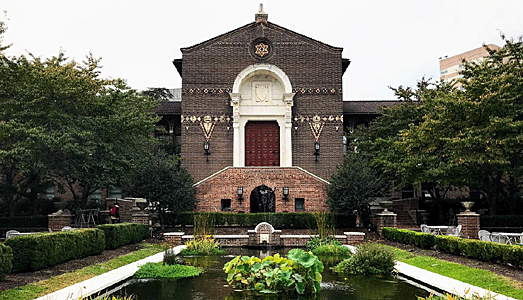
At the University of Pennsylvania Museum of Archaeology and
Anthropology—commonly referred to as the Penn Museum—located on Penn’s
campus at 33rd and South Streets in Philadelphia, visitors don't have to
fight off the mosquitos or brave the humidity to sample Tikal, the
mightiest temple complex in the whole Mayan empire. They can wonder at
the intricately carved stellae (columns that acted as calenders)
and the large round flat altar stones called caracols that were a
part of every temple complex. For the Penn Museum isn’t just a museum of
history, but one of archaeology and anthropology, and one of the finest
in the world.
From the outside, the Museum belays the wonders found within. Unlike
other museums in the area, it’s seldom crowded, except for special
exhibitions. In its quiet halls, visitors can wander peacefully at their
own pace, digesting the hundreds of ancient artifacts on display.
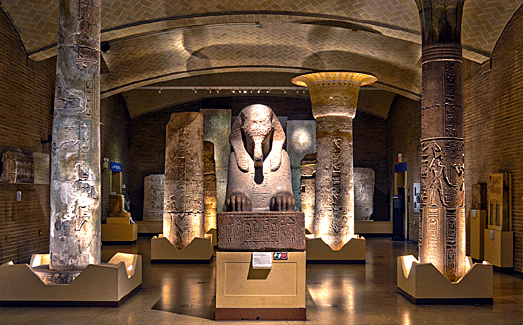
Founded in
1887 by a group of Philadelphians and originally called the Museum of
Archaeology and Paleontology, the Museum has devoted itself not just to
displaying relics of ancient cultures, but to the acquisition and
dissemination of knowledge as well as the preservation of the cultural
heritage of mankind.
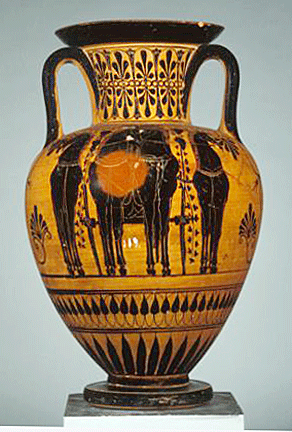 It has one of the leading archaeological and anthropological research
programs in the world and has been responsible for unearthing some of
the great treasures of past civilizations. In fact, the research it
conducts is the basis for its being. The exhibits are only one way that
it shares the knowledge it gains with the public.
It has one of the leading archaeological and anthropological research
programs in the world and has been responsible for unearthing some of
the great treasures of past civilizations. In fact, the research it
conducts is the basis for its being. The exhibits are only one way that
it shares the knowledge it gains with the public.
Because of this, visitors won't find an endless array of exhibits from
every period of history, but instead a well-chosen selection of the best
history has to offer.
The vast scope of the research the Museum has conducted began with John
Peters, Professor of Hebrew at the University of Pennsylvania, who with
the help of several prominent Philadelphians gathered finances for the
first expedition. In December of 1887, the Trustees of the University
agreed to send "an exploring expedition to Babylon" to bring back
artifacts to be housed in a new building the University would construct
for this purpose.
Peters selected the site of Nippur, the holy city of the Sumerians and
Akkadians, to begin what was to become the first in a long line of
firsts for the Museum in the field of archaeology. Since that time, over
300 field excavations and anthropological research projects around the
world have set it apart as an active research and educational
institution.
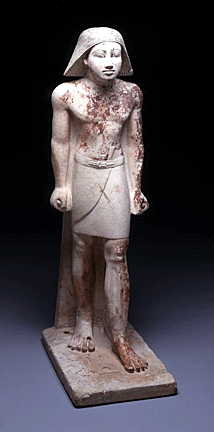 The
Museum’s varied collection of archaeological finds and ethnographic
objects, organized in eleven curatorial sections displayed in over 20
galleries on three floors, documents the peoples of Africa, Asia,
Oceania, and the Americas. Researchers use these holdings, as well as
the Museum Archives of excavation and research projects, to study the
cultures of these areas and share their knowledge with institutions
worldwide. The
Museum’s varied collection of archaeological finds and ethnographic
objects, organized in eleven curatorial sections displayed in over 20
galleries on three floors, documents the peoples of Africa, Asia,
Oceania, and the Americas. Researchers use these holdings, as well as
the Museum Archives of excavation and research projects, to study the
cultures of these areas and share their knowledge with institutions
worldwide.
The Museum's extensive collections fall into two main divisions:
archaeology, the artifacts recovered from the past by excavation, and
ethnology, the objects and ideas collected from living peoples.
The Museum's Egyptian collection, considered to be one of the finest in
the world, was begun by Sara Yorke Stevenson, who, as the first female
curator of Egyptology in the country, catalogued the thousands of
tablets written in cuneiform script that arrived at the Museum from the
Near East, began the Museum’s Egyptian collection.
Today, the museum's Egyptian galleries house an extensive collection of
statuary, mummies, and reliefs. Most notably, the museum houses a set of
architectural elements, including large columns and a 13-ton granite
Sphinx of Ramesses II, dating from around 1200 BCE., from the palace of
the Pharaoh Merenptah. A Museum expedition to Egypt excavated these in
1915.
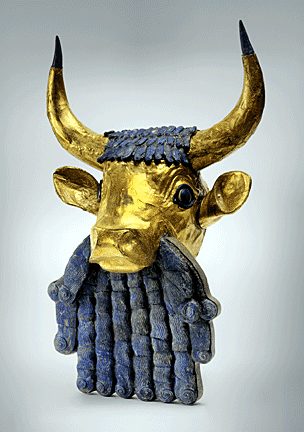 One
of the most spectacular expeditions and resulting artifacts came
Visitors can see the golden lyre from the Royal Tomb dating to 2650-2550
BCE. and a hammered gold tumbler from the wardrobe chest of the Queen of
Ur. One
of the most spectacular expeditions and resulting artifacts came
Visitors can see the golden lyre from the Royal Tomb dating to 2650-2550
BCE. and a hammered gold tumbler from the wardrobe chest of the Queen of
Ur.
The museum's most important collection came from the excavation of the
Royal Tombs of Ur, the capital of ancient Mesopotamia in what’s now
modern Iraq. The artifacts from its royal tombs showcase the city's
wealth. The collection consists of a variety of crowns, figures, and
musical instruments, many of which have been inlaid with gold and
precious stones. One of the most impressive is the golden Bull-headed
lyre.
To record their trade and purchasing agreements, the people of Ur used
clay tablets. The museum's Babylonian section houses a collection of
almost 30,000 clay tablets inscribed in Sumerian and Akkadian cuneiform,
making it one of the 10 largest in the world. The collection contains
the largest number of Sumerian school tablets and literary compositions
of any of the world's museums.
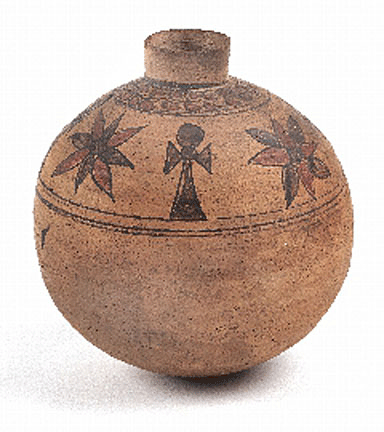 The
Museum's exhibits reach far beyond the Near East to every continent of
the globe. It also has one of the largest collections of African
ethnographic and archaeological objects in the country. Mostly obtained
from 1891 to 1937, the collection contains objects from all regions of
Africa, but with a concentration from the Democratic Republic of the
Congo, Gabon, Angola, Morocco, Sierra Leone, Ivory Coast, Senegal,
Nigeria, Kenya, Tanzania, Ethiopia, South Africa, Namibia, Botswana and
Madagascar. The
Museum's exhibits reach far beyond the Near East to every continent of
the globe. It also has one of the largest collections of African
ethnographic and archaeological objects in the country. Mostly obtained
from 1891 to 1937, the collection contains objects from all regions of
Africa, but with a concentration from the Democratic Republic of the
Congo, Gabon, Angola, Morocco, Sierra Leone, Ivory Coast, Senegal,
Nigeria, Kenya, Tanzania, Ethiopia, South Africa, Namibia, Botswana and
Madagascar.
Visitors can venture to China to see the world's largest cloisonné
lions. Originally stolen from the royal palace in Beijing, they were
eventually donated to the Museum by the Salada Tea Company, after they
decided not to use them as their logo.
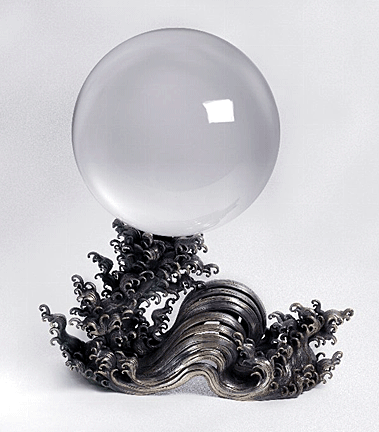 The
Harrison Rotunda houses the Museum’s fine collection of Chinese
sculpture, including two reliefs of Emperor Tang Taizong's six horses
which he used to unify China during the Tang Dynasty. In the center of
the gallery sits a perfectly spherical crystal ball. Someone stole the
crystal ball in 1988, and its elegant silver stand, a stylized ocean
wave, was found in a culvert not far from the Museum. The Museum staff
traced the crystal ball to a home in New Jersey and had it returned to
the Museum. The
Harrison Rotunda houses the Museum’s fine collection of Chinese
sculpture, including two reliefs of Emperor Tang Taizong's six horses
which he used to unify China during the Tang Dynasty. In the center of
the gallery sits a perfectly spherical crystal ball. Someone stole the
crystal ball in 1988, and its elegant silver stand, a stylized ocean
wave, was found in a culvert not far from the Museum. The Museum staff
traced the crystal ball to a home in New Jersey and had it returned to
the Museum.
Penn Museum's Mesoamerican collections include objects from Mexico,
Guatemala, Belize, El Salvador, Honduras, Nicaragua, Panama and Costa
Rica. The American Section's ethnographic collections from Mesoamerica
include an assortment of
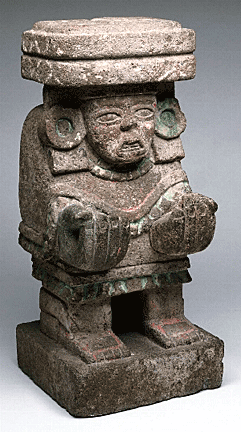 masks,
pottery, and textiles from Guatemala, as well as objects from Mexico,
Panama, Costa Rica, Nicaragua, and El Salvador. In Guatemala, masks,
pottery, and textiles from Guatemala, as well as objects from Mexico,
Panama, Costa Rica, Nicaragua, and El Salvador. In Guatemala,
The Museum's South American collections include anthropological
materials from Argentina, Bolivia, Brazil, Chile, Colombia, Ecuador,
Guyana, Paraguay, Peru, and Venezuela while its North American
archaeological collections contain specimens from 45 of the 50 United
States, including Alaska, New Jersey, New Mexico, Pennsylvania and
Texas. Its extensive collection of artifacts from the Tlinglit and Inuit
cultures of Alaska includes masks, totems, war helmets, blankets, and
other items.
The University Museum concentrates on the culture of societies around
the world and tries in it's limited space to explain their traditions
and customs. In a couple of hours, visitors can take a trip around the
world and see things they would never see if they traveled to all those
places.
<
Back to More Antiques to View
Next
Article > |
